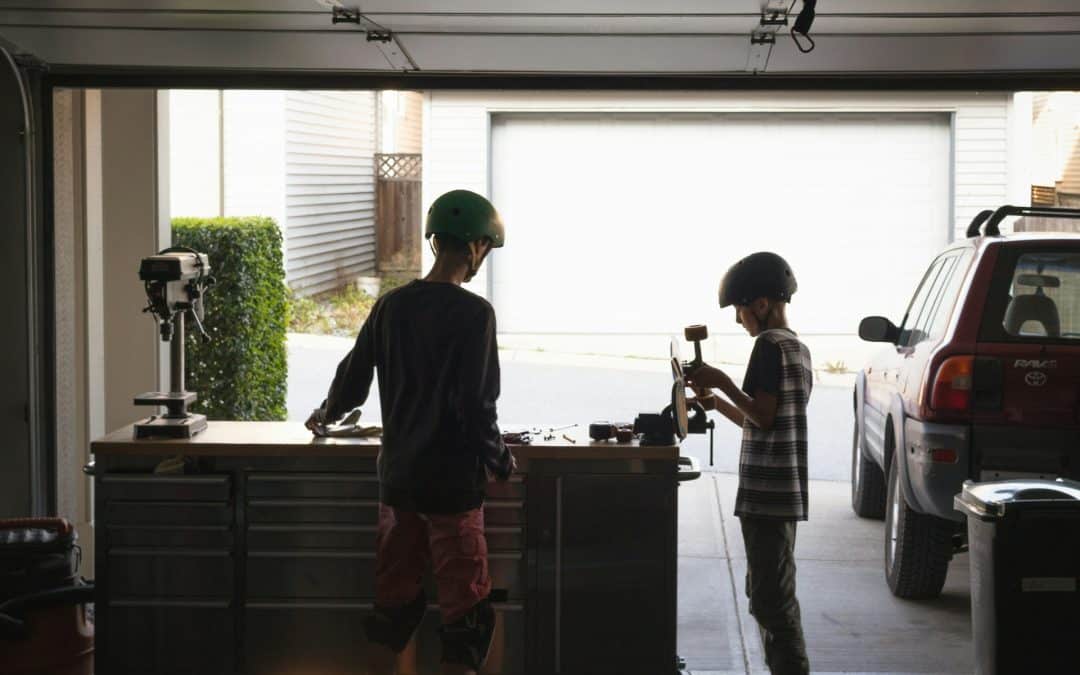A functioning garage door is essential for the security and convenience of your home. One common issue homeowners face is flipped garage door cables, which can prevent the door from working correctly. If left unattended, flipped cables can cause further damage and pose safety risks.
Understanding how garage door cables work and recognizing the signs of flipped cables is crucial for timely repairs. Whether it’s due to regular wear and tear, poor maintenance, or an unexpected issue, knowing what to look for can save you from costly repairs down the line. Flipped cables can cause your garage door to become uneven, jammed, or even stuck.
Understanding Flipped Garage Door Cables
What are flipped garage door cables?
Flipped garage door cables are cables that have twisted or become misaligned from their intended pathway. These cables are crucial for lifting and lowering the garage door smoothly. When they flip, they can cause the door to become unbalanced, jam, or refuse to move altogether. Knowing what flipped cables look like can help you quickly identify and address the problem.
Common causes of flipped cables
There are several reasons why garage door cables might flip. One common cause is regular wear and tear over time. As the cables age, they may fray or weaken, making them more susceptible to flipping. Another reason can be improper installation or adjustment. If the cables are not correctly tensioned or aligned, they can easily flip during operation. Finally, sudden impacts or obstructions in the door’s path can also cause the cables to flip.
Signs that your cables are flipped
Recognizing the signs of flipped cables is essential for timely repairs. If you notice that your garage door is uneven or seems to be struggling to open or close, flipped cables might be the cause. Additionally, look for visible twisting or misalignment of the cables along the tracks. Grinding or squeaking noises during operation can also indicate that the cables have flipped and need to be addressed.
Safety Precautions Before Beginning Repairs
Tools and equipment you’ll need
Before you start repairing flipped garage door cables, gather all the necessary tools and equipment. You will need a socket wrench, pliers, a ladder, gloves, and replacement cables if the current ones are too damaged. Having these tools ready will make the repair process smoother and safer.
Steps to safely secure the garage door
Securing the garage door is a crucial step before beginning any repair work. First, ensure the door is fully closed. Use C-clamps or locking pliers to secure the tracks above the rollers. This will prevent the door from accidentally lifting or falling during repairs. Additionally, place a sturdy ladder under the door to provide extra support.
Disconnecting the garage door opener
For added safety, disconnect the garage door opener before you begin working on the cables. This prevents the door from being activated while you are making repairs. Unplug the opener from the power source and, if applicable, pull the emergency release cord to disconnect the door from the opener’s drive system. This simple step eliminates the risk of electrical accidents and ensures that the door remains in place while you work.
By following these safety precautions, you can minimize risks and create a secure environment for repairing flipped garage door cables.
Step-by-Step Guide to Repairing Flipped Cables
Removing the old or flipped cables
To begin repairing flipped garage door cables, you first need to remove the old or flipped ones. Start by releasing the tension in the cables. You can do this by lifting the door slightly with a pair of vice grips in place above a roller to hold it. Carefully detach the cables from the bottom brackets using pliers. Once the tension is released, remove the cable drums from the torsion bar. This process requires careful handling to avoid further damage or injury.
Installing the new cables
Once the old cables are removed, it’s time to install the new ones. Start by attaching the new cables to the bottom brackets of the garage door. Make sure they are securely fastened. Next, thread the cables through the cable drums at the top of the door. Wind the cables evenly onto the drums, ensuring there are no overlaps or tangles. Secure the drums back onto the torsion bar and double-check that the cables are aligned correctly along the tracks.
Adjusting the cable tension for proper operation
After installing the new cables, you need to adjust the tension to ensure the garage door operates smoothly. To do this, use a winding bar to turn the torsion springs in small increments. This will increase or decrease the tension as needed. Once the tension feels balanced and the door moves smoothly, secure the springs in place with the set screws. Properly adjusted tension is crucial for the safe and efficient operation of your garage door.
Testing and Final Adjustments
Testing the garage door after repairs
With the new cables installed and tension adjusted, it’s time to test the garage door. Reconnect the garage door opener and remove the vice grips or clamps securing the door. Carefully open and close the door several times to ensure smooth operation. Listen for any unusual noises and watch for any signs of uneven movement. This testing phase helps confirm that the repair was successful and that the door is functioning correctly.
Making necessary adjustments
If you notice any issues during testing, such as the door not closing fully or moving unevenly, you may need to make further adjustments. Check the alignment of the cables and the tension in the springs. Adjust as necessary to achieve smooth and balanced operation. It’s important to get these settings right to avoid future problems and ensure the door’s safe use.
Routine maintenance tips to prevent future issues
Keeping your garage door in good working order requires regular maintenance. Here are a few tips to help prevent future issues with flipped cables:
– Regularly inspect your cables for signs of wear and tear.
– Lubricate moving parts, including the cables, pulleys, and springs, at least twice a year.
– Keep the tracks clean and free of debris.
– Check the balance of your garage door periodically and adjust the tension as needed.
Following these maintenance tips can help extend the life of your garage door and prevent common issues.
Conclusion
Repairing flipped garage door cables might seem challenging, but with the right knowledge and tools, it’s a manageable task. Understanding the causes and signs of flipped cables helps you address the issue promptly. Ensuring safety before starting and following a step-by-step repair guide will make the process safer and more efficient. Regular testing and adjustments, along with routine maintenance, will keep your garage door working smoothly.
By taking these steps, you can prevent minor issues from becoming major problems, saving both time and money. A well-maintained garage door not only enhances the functionality of your home but also ensures safety. Should you need professional help or further assistance, don’t hesitate to reach out.
For expert garage door repair services, including fixing flipped cables, contact Garage Door Rescue. Schedule your service today to ensure your garage door operates flawlessly and safely.

